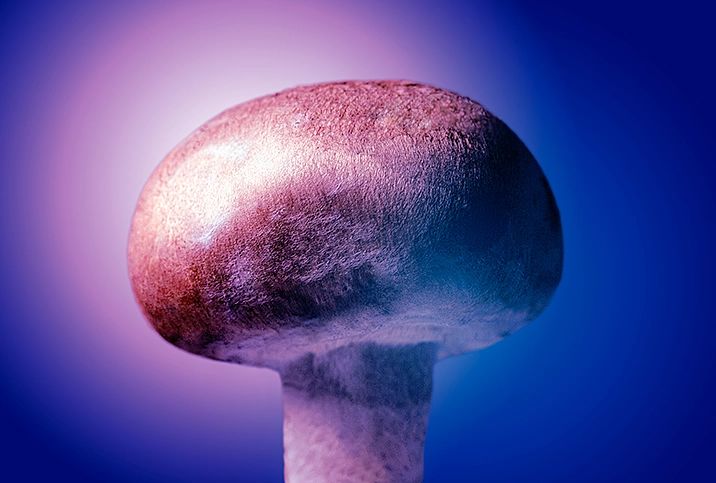Many centuries ago, human penises came studded with tiny, hard spines. Yes, really. These were made up of keratin, a type of protein that still forms tissue and cells in our nails, hair and skin. A 2011 study published in Nature suggested these spines helped our ancestors to "remove the sperm of competitors when they mated with females."
As we switched to more monogamous mating patterns, the spines were no longer needed. As a result, the modern-day human penis became smooth.
This notion of sperm competition crops up regularly in penis-related research. Evolutionary biologists have argued penile morphology has evolved to maximize reproductive potential, a theory that might explain why phalluses today have "mushroom penis heads."
Gallup's theory
In 2003, American psychologist Gordon Gallup Jr. led a group of scientists on a mission to analyze claims that the human penis "evolved to compete with sperm from other males by displacing rival semen from the cervical end of the vagina prior to ejaculation," according to the study, which was published in 2004 in Evolutionary Psychology journal.
To investigate this hypothesis, researchers created artificial penises, model vaginas and various recipes for fake semen that varied in thickness. They then simulated sexual encounters with the models and "measured the magnitude of artificial semen displacement as a function of phallus configuration, depth of thrusting and semen viscosity," the study stated.
The experiment suggested the mushroom head of a penis––known scientifically as the coronal ridge––plays a key role in semen displacement by effectively "scooping out" rival sperm. Gallup's research factored in the effects of circumcision, too. Although the foreskin of any penis retracts when erect, the study showed cut penises have a "more pronounced coronal ridge [that] creates a larger area for semen to collect where it could be scooped back away from the cervix."
A tabloid renaissance
To date, Gallup's 2003 research remains the most commonly cited study on the mushroom head of the penis. Surprisingly, earlier in 2022, tabloids began reporting the study as news.
Gallup told me he's not surprised by the interest his work has received and that the research has since been replicated by a number of different investigators. But his study has also been criticized. In fact, these critiques were so widespread that in 2009, Scientific American magazine published a follow-up interview with Gallup about his semen displacement theory entitled "The Misunderstood Penis."
"There is no consensus on why some penises have a mushroom head appearance," said Josh Gonzalez, M.D., the resident sexual health expert for Astroglide lubricant in Vista California near San Diego. "There was one study [Gallup's] in the early 2000s that postulated the mushroom shape was an evolutionary development. To be clear, this is a single theory and one that has faced criticism from other researchers."
This doesn't mean evolutionary factors haven't played a role in shaping the human penis, though.
"Evolution has likely played an important role, as it has in many animals," Gonzalez continued. "Genetics and hormonal factors also influence how big a penis is and probably, to an extent, what it looks like. Environmental factors may also be important, and cultural practices like circumcision can also affect the appearance."
Penises are like snowflakes
Most information about mushroom penis heads comes from tabloid headlines as opposed to peer-reviewed research. In 2018, the manufacturers of an erectile dysfunction device released research that led to headlines claiming there were seven definitive penis shapes, including the "hammer," which sported an extremely pronounced mushroom shape.
According to a source quoted by London's Daily Mail, "gravity makes it more difficult for this type of erect penis to lift skyward on erection."
This is definitively untrue—and if you doubt that, take a quick scroll through Reddit's MushroomDicks forum. The NSFW subreddit boasts more than 16,000 members with mushroom penis heads and plenty of photographic evidence that they can "lift skyward." Gonzalez corroborated the inaccuracy of this claim, too.
"There's no data which indicates a particularly shaped penis is more or less likely to get or stay hard," he said.
There's only cause for worry if the head of the penis itself is sore, itchy or inflamed, as these irritations can be symptoms of balanitis. Otherwise, a pronounced head should be of no concern, Gonzalez said.
Aside from making condom shopping a little more difficult––a penis with a large head and a slim shaft can make sizing trickier––there's nothing to worry about if your mushroom head protrudes more than most.
"Basically, penises are like snowflakes," Gonzalez explained. "Each is different from the next."
